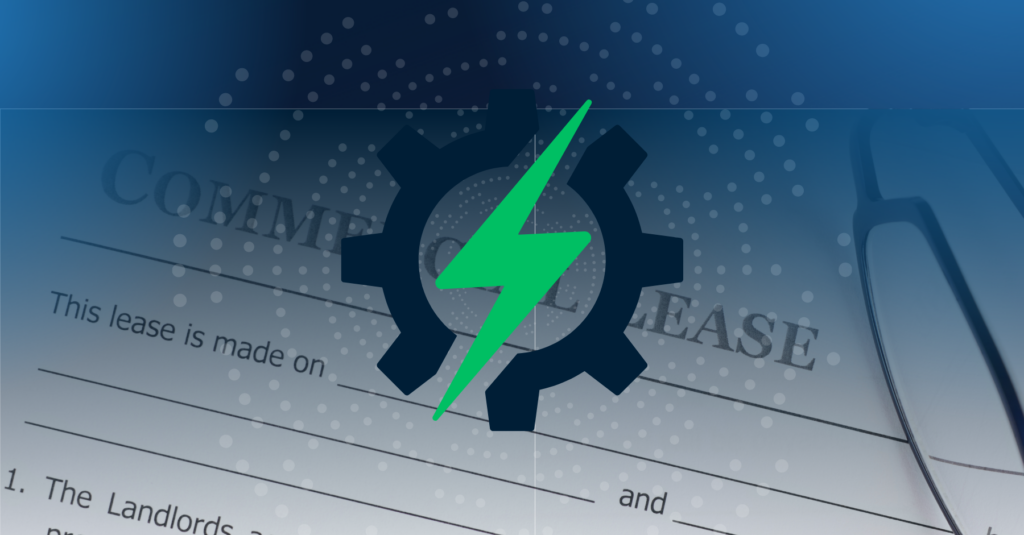What are Green Leases?
For those unfamiliar, a green lease incorporates clauses that foster collaboration between landlords and tenants on energy efficiency and environmental performance. These clauses range from general commitments to specific, enforceable obligations, ensuring shared responsibility for reducing a building’s carbon footprint. Depending on the lease agreement, tenants may be influencing up to 80% of a building’s energy use, and green leasing is an actionable tool that holds everyone accountable, allowing both owners and tenants to gather the data they need for emerging disclosure laws, and to reduce climate impact at the whole building level.
Green leases, also known as “energy-aligned leases” or “high-performance leases,” are agreements that incorporate terms encouraging sustainable practices and energy efficiency into the leasing of buildings. At their core, green leases are designed to align the interests of landlords and tenants towards achieving energy efficiency and sustainability goals. Traditional lease agreements often discourage investment in energy efficiency, as the benefits of such investments are not equally shared between the tenant and landlord. Green leases address this divide by ensuring that both parties share the costs and benefits of sustainability improvements leading to a mutual benefit from the property’s improved performance. While these leases started as a way to address energy consumption in a building, over time, green leasing has evolved to also address a broader set of sustainability challenges such as water consumption, waste management, and indoor air quality.
Although green leases vary by company, Green Lease Leaders, created and managed by the Institute for Market Transformation (IMT) and the U.S. Department of Energy’s (DOE) Better Buildings Alliance, sets national standards for what constitutes a green lease and recognizes landlords and tenants for creating and implementing compliant leases.
Benefits for Owners
The adoption of green leases brings multifaceted benefits, driving a positive impact on the environment, financial health, and stakeholder relationships. By adopting green leasing practices, the energy efficiency gap can be filled, and utility consumption in offices across the country reduced—with the potential for landlords and tenants to realize significant savings. For landlords, offering green leases in the future will not only attract tenants but also enhance property value and competitiveness in a market increasingly driven by sustainability. Green leases are not just about meeting external pressures—they are about proactively shaping a sustainable and resilient future in real estate.
- Increasing Property Value: Properties subject to green leases typically experience an increase in value. These buildings attract tenants more easily, command higher rents, and have lower vacancy rates due to their enhanced sustainability features and operational efficiency. Energy expenses are rising faster than core inflation. Marketing that the property is designed to reduce wasted expenses will drive more leasing activity. With occupier activity accounting for up to 100% of emissions outside the office sector and demand for low-carbon workspaces set to outpace supply by 75% by 2030, green leases are not just a competitive edge—they’re essential. Building owners without an occupier engagement strategy don’t have a decarbonization strategy, making green leases a strategic necessity for driving sustainability and staying ahead in the evolving real estate market.
- Regulatory Compliance: With governments globally tightening regulations on energy use and sustainability in commercial spaces, green leases provide a proactive framework for compliance, reducing the risk of penalties. A tenant must partner with landlords to comply with all local jurisdiction reporting requirements. In jurisdictions with strict building performance standards, one tactic is to include green lease language that allows fees and fines to be shared with tenants in the case of non-compliance. In addition, stipulations on data sharing are common to alleviate the strain of data requests in these laws. Leases will outline that certain data must be shared with the Landlord, as requested, including full-time and part-time occupants, room sq. ft. and supplemental HVAC characteristics, the total quantity of computers, and monthly utility consumption if paid by the tenant directly to the utility. These clauses can be particularly helpful for landlords in triple-net lease scenarios, where tenants generally control utility access. Data sharing, particularly around energy performance, is key to monitoring and measuring progress. It’s in both the tenant’s and landlord’s interest to ensure data is as robust and accurate as possible. This provides greater visibility into what’s working well, identifies improvement areas, and promotes goal setting based on actual performance results.
- Industry Recognition & Acclaim: Higher-performance buildings can increase ENERGY STAR and LEED scores, as well as assist with achieving other certifications such as BOMA 360, Fitwel, or WELL. Receiving industry recognition also helps a company retain and attract like-minded employees, tenants, investors, and other partners.
- Correcting Overtime HVAC Charges: In gross lease properties, green leases can ensure that the true cost of operating the property is reflected in utility bill backs to tenants. Overtime HVAC costs are often a hidden cost center with the rate charged for overtime HVAC calculated once and not updated for years, despite significant increases in cost to landlords. Correcting for the true cost either helps the landlord recover their full costs or encourages the tenant to reduce their consumption.
Key Considerations for Landlords
- Driving Sustainability Initiatives: Sustainability-conscious landlords often see green leases as a means to align their interests with those of triple-net tenants. Landlords must have a well-defined green lease policy, supported by leadership and understood by everyone from the C-Suite to property management teams. Proactive engagement with tenants on sustainability strategies and aligning these with the tenant’s construction needs can pave the way for smoother negotiations and implementation.
- Leveraging Property Teams: Property management teams and building engineers play a vital role in the success of green leases. Their day-to-day knowledge of building operations can guide the focus areas of the lease and ensure that the sustainability goals are practical and achievable. Landlords should engage these teams early to develop effective green lease strategies, grounded in operational realities.
How Tango Can Help
Together, Tango Energy & Sustainability and Tango Lease provide a comprehensive solution for overcoming the challenges of green leasing. By integrating advanced data management and lease administration tools, these products enable better communication between landlords and tenants, ensure accurate tracking and reporting of sustainability metrics, and facilitate the successful implementation of green lease clauses. Whether enhancing energy efficiency, meeting regulatory demands, or achieving corporate sustainability goals, Tango’s solutions are designed to make green leasing more accessible, efficient, and impactful.
Tango Energy & Sustainability:
Tango Energy & Sustainability is an energy and sustainability data management software that can equip landlords and tenants alike with the tools needed to measure and monitor progress on sustainability & efficiency measures, aggregate data all in one place, and report if required. While Tango Lease will help ensure green lease wording is right and provide oversight on legal logistics, Tango Energy & Sustainability will provide the actionable data for operationalizing and implementing goals outlined in the lease agreement. Tango Energy & Sustainability’s capabilities include automatic ingestion and real-time monitoring of utility invoice and emissions data, providing a comprehensive view of energy consumption across a portfolio. The software integrates seamlessly with major reporting frameworks such as ENERGY STAR, GRESB, and more, automating the reporting process and ensuring compliance with climate disclosure requirements. By leveraging Tango Energy & Sustainability, landlords can easily monitor building performance, identify underperforming assets, and implement energy efficiency measures that reduce operational costs and carbon emissions. The system’s ability to accurately distinguish tenant-specific utility consumption further alleviates the data-sharing needs between tenants and owners.
Tango Lease:
The Tango Lease module offers robust lease administration and financial management capabilities. With Tango Lease, property owners and tenants can efficiently manage lease agreements, including the specific clauses related to green leasing. The system enables users to track all relevant lease information, categorize different clause types, and generate lease abstracts that highlight critical sustainability stipulations. Tango Lease’s AI-powered lease extraction technology simplifies the process of pulling necessary data from various sources, ensuring that all green lease obligations are accurately captured and easily accessible for reporting and compliance purposes.
More About WatchWire
WatchWire by Tango is a market-leading, energy and sustainability data management platform that uses cloud-based software to collect, automize, and analyze utility, energy, and sustainability data metrics. WatchWire streamlines, automates, and standardizes your sustainability reporting process by integrating directly and/or providing reporting exports to ENERGY STAR Portfolio Manager, LEED Arc, GRESB, CDP, SASB, GRI, and more. The platform provides customizable dashboards, which allow asset managers, sustainability managers, engineers, and more to monitor individual key performance indicators (KPIs) and create custom views for specific use cases.
To learn more about WatchWire and its capabilities, you can visit our website, blog, or resource library, request a demo, or follow us on LinkedIn, Instagram, or Twitter to keep up-to-date on the latest energy and sustainability insights, news, and resources.
 Top Sustainability Trends to Watch in 2025
Top Sustainability Trends to Watch in 2025

 Log In
Log In









